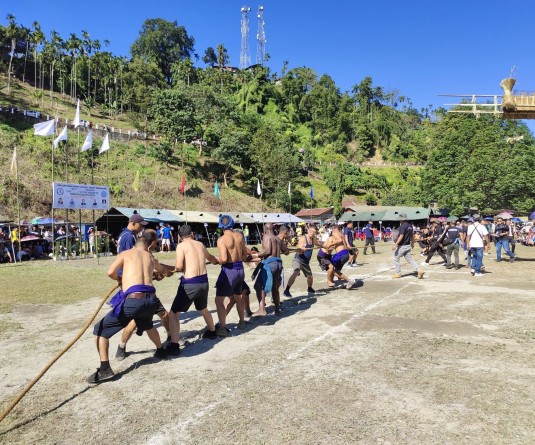
We stand for inclusive talks. All stakeholders should be part of the peace process: Sumi Hoho
Morung Express News
Zunheboto | May 8
Sumi Hoho statistics suggest that there are 403 Sumi villages in Nagaland State—every district has a presence of Sumi villages except Mon and Longleng. This is the geographical presence. Sumi people have been a major part of the Naga national movement and continue to be important stakeholders and decision shapers in the political arena.
It may be convenient to assume that the power this wields would put the Sumi people at the pinnacle of development and justice. But reality suggests otherwise. Sumi people, particularly those living in Zunheboto district, continue to struggle. Today, their central point of assertion is ‘Inclusive (political) Talks’ and peace.
Unofficial Battleground
“The political aspiration of self governance of the Sumi people was not fulfilled by past accords. We are free people; Indians neither by consent nor conquest,” asserts Vihuto Asumi, General Secretary of the Sumi Hoho, the apex decision making body of the Sumi people. So the struggle continues.
But this plays out in many different ways on the ground. From 2000-2010, for instance, ‘turf wars’ between some Naga political groups became an everyday reality for people living in Zunheboto.
“There may be many different political groups but only one turf. Everyone used to come to Zunheboto to seek refuge and hunt each other down. It became the unofficial battleground,” explains Vinokha Rotokha, General Secretary of the Zunheboto Town Youth Organisation (ZTYO).
A team of ZTYO members explain the dynamics. After 1988, according to them, NSCN (IM) ruled the Zunheboto roost. Inter group battles gained intensity after 2005, when the then united NSCN (K) had to vacate Mokokchung town. “They fled from there and came here (Zunheboto town), and battles intensified.”
“Women had to come out to make peace whenever the situation got out of hand,” notes Eunice Yepthomi, a member of the ZTYO. This inspired the ZTYO to begin its own movement for justice and peace through active participation of the youth in Zunheboto town. In 2013, Mukalimi happened—following an incident of sexual harassment, an armed camp of the NSCN (IM) was forcefully vacated by civilians, some of them armed. Encouraged by the “newfound vigour,” one that most youth in Zunheboto are proud of, today they are set to rejuvenate themselves through festivals, sports, literary events, arts and crafts and activism for better development of the district as a peaceful hub.
Inclusive talks
Beyond Zunheboto, the Sumi people are invested in larger Naga politics, often running at the forefront. The Sumi Hoho, in February this year, visited Myanmar to meet the NSCK (K) leader SS Khaplang.
“Sumi Hoho gave a clear message to the leadership—make the right decision at the right time,” says the General Secretary of the Hoho, Vihuto Asumi. An opportunity to make peace should not be lost.
From Khaplang, the Sumi Hoho received the message that the Government of India (GoI) was trying to bring more division in Naga society through the ceasefire. It was not moving towards a “genuine solution.” So, while it hopes that “peace and solution will come soon,” the Hoho has let the NSCN (IM) leadership know that everyone, at least on the Indian side of Naga affairs, should be brought under one umbrella.
“We stand for inclusive talks. All stakeholders should be part of the peace process, and apex bodies should work without fear or favour towards bringing everyone on board,” Asumi lists out.
His conclusions are a result of observing the peace process and the stance taken by Naga civil bodies at various junctures. Some of them, he feels, have become “one sided.”
“We did not go to Myanmar because someone sent us. Nobody sponsored us. We are meeting all stakeholders and sharing our findings with everyone,” he puts it straight.
The GoI, Asumi holds, is prepared to give a “full and final solution” while the Naga political groups “may not be thinking so,” a conclusion he has drawn from his interactions also with GoI representatives. This, however, should not stop the Naga apex bodies from working towards “inclusiveness.”
On a parting note, he reflects, “If the Sumis have good bonding in the East, West, North, South, it will bring all the Nagas together too.” Formed in 1979, the Sumi Hoho pledges itself to this, and encourages its youth to carry forward a positive light of the struggle.






